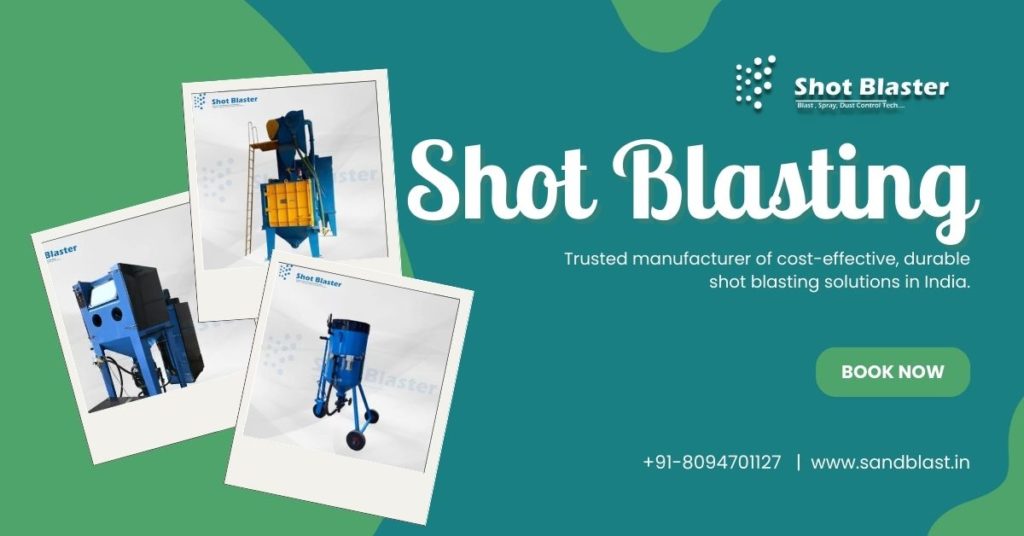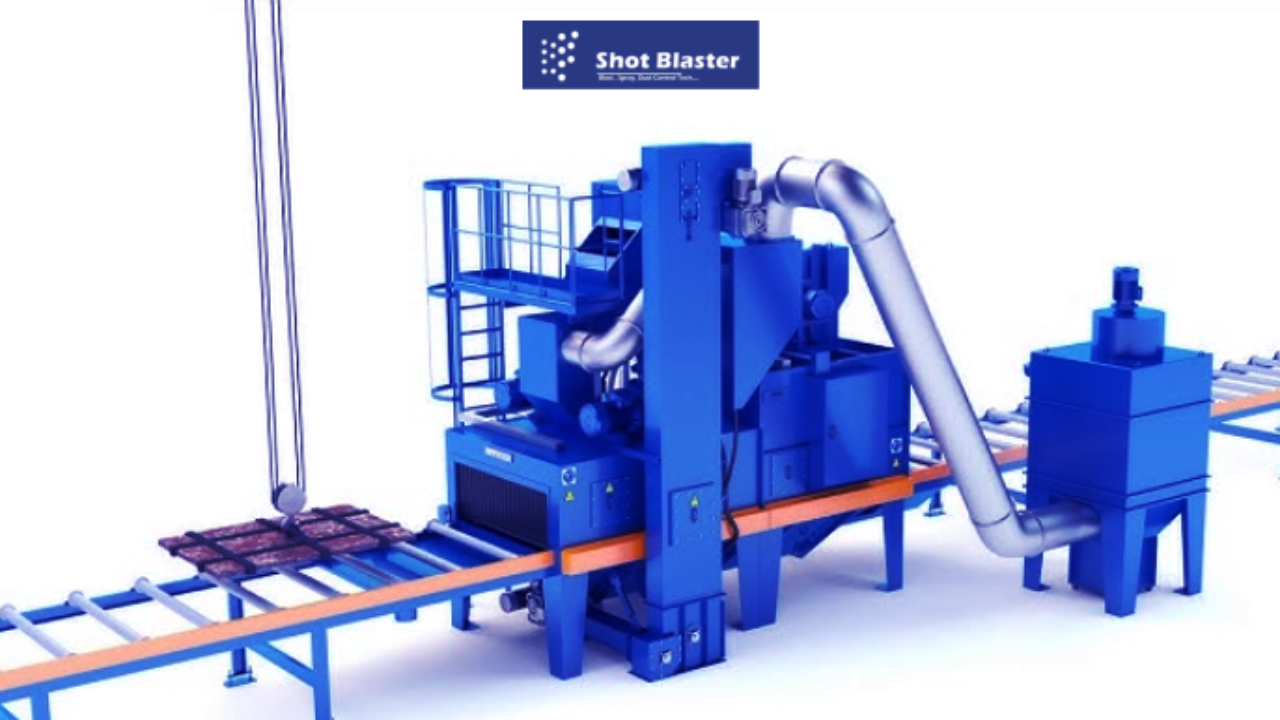Wondering about Shot Peening vs. Shot Blasting? Discover the key differences between these two vital processes and how they impact material strength, surface finishes, and more in this detailed guide by Shot Blaster.

Introduction
In the world of industrial and mechanical processes, understanding the differences between various surface treatment methods is essential for making the right choice in applications. Two processes that often come up in conversations about material preparation and enhancement are shot peening and shot blasting. These two techniques might sound similar at first, but when you take a closer look, you’ll quickly realize that they serve different purposes and achieve different results.
If you’re trying to decide which one suits your needs best, you’ve come to the right place! This article will take you through the ins and outs of Shot Peening vs. Shot Blasting. We’ll dive into each process, explain how they work, and help you figure out when and where each method shines the brightest. Let’s get started!
What is Shot Peening?
Before we get into the comparison, let’s first take a look at shot peening. Shot peening is a mechanical surface treatment process used primarily to improve the fatigue strength of materials. It works by bombarding a surface with small, hard particles (called “shots”) that cause plastic deformation of the material’s surface. These shots are typically made of steel, glass beads, or ceramic.
How Does Shot Peening Work?
In shot peening, the material is subjected to the force of these shots at high velocity. As the shots hit the surface, they create tiny indentations or dimples. The energy from these shots also induces compressive stresses on the surface layer, which is key to enhancing fatigue resistance. Essentially, the process strengthens the material by improving its ability to withstand cyclic loading without cracking.
The shot peening process includes:
- Loading: The workpiece is positioned in the path of a stream of media (shots) directed toward it.
- Peening: The shots strike the surface at high velocity, causing plastic deformation and inducing compressive stress.
- Finish: The result is a stronger, more durable surface capable of withstanding greater stress over time.
Applications of Shot Peening
Shot peening is commonly used in industries where parts experience repeated stress or wear. Here are a few applications:
- Aerospace: Aircraft components like turbine blades and landing gear benefit from enhanced fatigue resistance.
- Automotive: Engine components, springs, and transmission parts undergo shot peening for durability.
- Marine: Parts exposed to harsh environmental conditions, like propellers and shafts, use shot peening for better lifespan.
What is Shot Blasting?
Now, let’s turn our attention to shot blasting, a process that sounds similar but is quite distinct from shot peening. Shot blasting is typically used for cleaning, surface preparation, or surface finishing, especially in the context of removing rust, dirt, or old paint.
How Does Shot Blasting Work?
Shot blasting involves propelling abrasive media at high speeds onto the surface of a material, which removes contaminants or prepares the surface for further treatments. Unlike shot peening, the goal isn’t to induce compressive stresses or enhance the material’s mechanical properties; rather, it focuses on cleaning or roughening the surface to improve adhesion for coatings, paints, or other processes.
Key differences include:
- Media Used: Shot blasting uses a variety of abrasives such as steel grit, sand, or other hard materials, and these are often more aggressive than the media used in shot peening.
- Velocity: The shots in shot blasting are generally projected at a higher velocity, which allows for more aggressive cleaning or etching.
Applications of Shot Blasting
Best automatic shot blasting machine for metal finishing is commonly employed in industries that deal with large quantities of metal parts or components that need surface cleaning or preparation. Here are some typical uses:
- Automotive Manufacturing: For cleaning castings or preparing metal surfaces before painting.
- Construction: Removing dirt, rust, or mill scale from steel beams or plates.
- Shipbuilding: Preparing large metal surfaces for further treatment, like anti-corrosion coatings.
Shot Peening vs. Shot Blasting: What’s the Difference?
Now that we’ve covered the basics of shot peening and shot blasting individually, let’s get to the heart of the matter: the differences between the two. Here’s a side-by-side comparison that highlights the key distinctions.
1. Purpose
- Shot Peening: Its primary purpose is to improve material strength, particularly fatigue resistance. It works by inducing compressive stresses on the surface of the material, enhancing its ability to resist cyclic loading.
- Shot Blasting: This is mostly used for cleaning, surface preparation, or roughening. It doesn’t alter the material’s mechanical properties in the same way shot peening does.
2. Effect on Material
- Shot Peening: Induces plastic deformation and creates compressive stress, making the material more resistant to fatigue, cracking, and wear.
- Shot Blasting: Primarily removes contaminants like rust, paint, or dirt. It may roughen the surface, but it doesn’t contribute to the material’s strength or durability in the same way.
3. Media Used
- Shot Peening: Uses spherical media such as steel balls, glass beads, or ceramic beads, which are softer compared to blasting media. These media are intended to cause controlled surface indentations.
- Shot Blasting: Uses more abrasive, angular materials like steel grit or sand, which are intended to clean the surface or prepare it for further treatment.
4. Speed and Intensity
- Shot Peening: The velocity of the shots is generally lower compared to shot blasting. The purpose is controlled deformation, not aggressive cleaning.
- Shot Blasting: The shots are propelled at higher speeds, making the process more aggressive for cleaning or roughening surfaces.
5. Applications
- Shot Peening: Best suited for parts under repeated stress or wear, such as those in the aerospace, automotive, and marine industries.
- Shot Blasting: Ideal for cleaning and surface preparation in industries like construction, shipbuilding, and automotive.
Step into the details – https://riyasingh258.blogaaja.fi/the-future-of-surface-finishing-with-airless-shot-blasting-solutions/
When to Choose Shot Peening or Shot Blasting?
Now that we’ve broken down the technical differences, you might be wondering: which one is right for your project? Let’s make it a bit clearer by highlighting the scenarios in which each process excels.
Choose Shot Peening If:
- You need to improve the fatigue life of a component.
- You’re working with parts that will undergo repeated stress or cyclic loading (e.g., aircraft parts, engine components).
- You want to enhance the material’s resistance to cracking or failure under stress.
Choose Shot Blasting If:
- Your focus is on cleaning surfaces or removing contaminants like rust, dirt, or old paint.
- You need to prepare a surface for further treatments like painting or coating.
- You’re looking to roughen a surface for better bonding (e.g., for welding or coating).
FAQs About Shot Peening vs. Shot Blasting
1. Can shot blasting be used for strengthening materials?
No, shot blasting is not intended for strengthening materials. It’s primarily a cleaning or surface preparation process.
2. What types of media are used in shot peening?
Shot peening typically uses spherical media, including steel balls, ceramic beads, or glass beads, which help create controlled indentations on the surface.
3. Is shot blasting more aggressive than shot peening?
Yes, shot blasting uses higher-velocity shots and more abrasive media, making it a more aggressive process, especially for cleaning and surface preparation.
4. Can shot peening and shot blasting be used on the same part?
Yes, in some cases, both processes can be used. Choosing the right shot blasting machine for your business might first clean or prepare the surface, followed by shot peening to improve the part’s strength and durability.
Conclusion
So, there you have it! While Shot Peening vs. Shot Blasting: What’s the Difference? might seem like a small distinction, it can make a huge difference in the quality and longevity of your materials. Shot peening is perfect for enhancing the fatigue strength of parts under stress, while shot blasting is ideal for cleaning and surface preparation.
When making your decision, think about the specific needs of your project. Do you need to strengthen materials? Go with shot peening. Are you cleaning or preparing surfaces for further processes? Shot blasting is your answer. Understanding these differences ensures you’re choosing the right treatment for the job!
If you’re still unsure about which method to use, don’t hesitate to consult with professionals in the field—they’ll help you find the best solution for your needs!
Related Post – https://riyasingh258.blogaaja.fi/how-to-choose-the-right-shot-blasting-machine-for-your-needs/



Leave a Reply